|
Although you may take it for granted, bark can tell you a lot about a tree. Get up close and personal with a tree and let Curt show you how interesting bark can be. Plus, he shares some of the things we do as climbers to minimize the damage we cause.
0 Comments
By Emma Koeppel Baltimore Orioles are a brilliant orange and black bird. They migrate from Central America to the northernmost parts of the United States every year and herald the beginning of spring in Wisconsin. The Cornell Lab of Ornithology describes their song as “pure, liquid, whistling tones.” They can often be found singing their liquid gold song from the uppermost treetops, pausing between melodies to search for a tasty insect snack. For years I never paid much attention to orioles. This spring that changed. I started seeing and hearing them everywhere. On my morning hikes, in my backyard tree, flittering ahead of me as I walked around the neighborhood. Also around this time, I had my first experience with tree climbing. I hadn’t intended to climb that day but stumbled upon the opportunity. Within minutes of lifting my feet off the ground, I knew I was never looking back to a tree-climbing-less life. On my most recent climb, I was perched on a branch high in the tree a couple of hours before sunset. I had been climbing all day so I was sweaty and tired. Gnats were swarming around my face and I had a good-sized blister that was letting me know it was there. As I sat, I let the quiet sink in. I let my breathing slow and let my body feel supported by the tree branch underneath me. And there it was. A female oriole dancing through the treetops. In some ancient cultures, orioles symbolize a positive change or a ray of sunshine entering your life. Regardless of whether or not animals hold any symbolic power over our stories as humans, tree climbing has certainly been a welcome ray of sunshine in my life. When I climb trees, I feel invigorated and full of energy. At the same time, it’s like traveling back in time to childhood when I spent hours perched in my favorite tree. Climbing into a tree as an adult re-awakened feelings of wonder and awe that I didn’t know had been missing. It allowed me to literally perceive the world from a new angle. This awakened a desire to perceive more of my life from new angles. While the feelings that tree-climbing will evoke are different for everyone, I do think tree-climbing has some inherent benefits that can be powerful to anyone who climbs! Tree climbing provides challenges.
The nature of tree-climbing is such that you can choose any challenge that suits you. Maybe you are scared of heights and your goal is to get 5 feet off the ground. That is a great goal! Maybe you hope to climb high enough to sit on the lowest branch. Maybe you want to scurry as high into the tree as possible and look out over the city below. Tree climbing can meet you where you are comfortable, while at the same time inspiring you to push beyond your comfort zone. And trust me, when you do push beyond it, you’ll feel great! A chance to slow down and notice.
To notice the moss growing on the limb next to you. To notice how your body feels as it pushes you higher and higher into the tree. To notice the texture of the bark. To notice your thoughts slowing down. As our days speed up, slowing down and noticing are two things that often get thrown to the wayside. We rush from one place to the next, checking tasks off of our to-do lists. Kids may find themselves in this busy pattern, too. Many of the kids I know will gladly fill their after-school time with soccer, dance, theater, basketball, baseball, piano lessons, violin lessons, and the list goes on. Of course, all of these activities are enriching in their own right, but it’s easy to become unbalanced. A balance of the fast rushing with slow noticing creates important space. Tree climbing may be a place where you can devote all of your attention to a single goal for an hour, thus treating yourself to a much-needed break from the rushing that we all experience sometimes. Tree climbing provides connection. On my first climb I felt connected to the tree, to the other climbers, and to the facilitators. In order to participate in the process of climbing the tree, I had to have a baseline level of respect and trust in the people and environment surrounding me. Connection breeds trust, respect, and shared values and experiences. If we don’t feel a connection to something or someone, we are much less likely to show them care and respect. We all know the benefits of feeling connected to other people; that connection makes us feel understood, supported, and valued. But what about the benefits of feeling connected to a tree? Those are a bit harder to grasp or put into words. On a fundamental level, trees keep us alive. They provide oxygen for us to breath. Along with oxygen, trees give us shelter, material, food, relaxation, water, and beauty. If we don’t interact with trees in our daily routines, it can be hard to develop a connection to them. Subsequently, trees and the environment we call home may not always receive the respect and care that they deserve from us. Spend an hour in the canopy of a tree and maybe you’ll walk away with a new sense of connection!
Thanks to Hartford Recreation Department and TNF Videos for creating a fantastic video about the experience of tree climbing! See it from beginning to end and hear what it’s like straight from the kids and their parents.
“It’s a really good experience; something they’ve never been able to do before.” - Jennifer Schroeder “It’s scary, it’s fun, it’s a blast, it’s a workout.” - Aldon Kaye Tree Climbing from TnF Videos / Rachel Womack on Vimeo. You’ve heard the expression “Stop and smell the roses.” How about the leaves, blossoms, bugs and even fungus?! Join me in the tree to appreciate the little miracles that are right above your head. 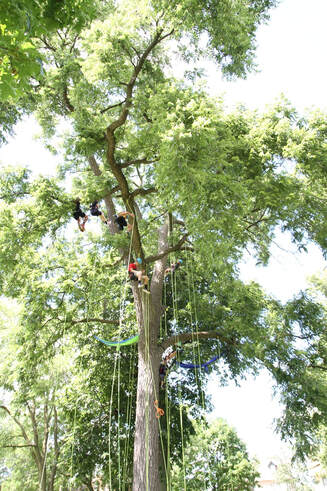 Statistics Height: 80’ Trunk Diameter: 34” Spread of Branches: 55’ Approximate Age: 60-90 years old About the Tree You are likely familiar with black walnut on some level. It produces a high-quality wood with beautiful coloring and grain patterns. You might not know that it has the ability to use chemical warfare to hinder nearby plants from competing for valuable soil resources. The husks can be used to make a brown dye for fabric. The largest known walnut in Wisconsin is near Dousman. This tree has been crowned current champion, in part due to reaching 100 feet towards the sky and sporting a trunk of 34" in diameter. My appreciation for eastern black walnut trees really took hold while living in Des Moines, Iowa. Walnut Woods State Park is home to one of the largest natural stands of black walnut. I spent time camping and hiking amongst these glorious trees. I would spend afternoons sitting on the bank of the river, watching the water flow by as I snacked on freshly fallen walnuts. Walnut’s strong wood and branching structure make them a fun tree to climb. Our climbing tree in Cutler park in Waukesha has a tall trunk with the crown sitting high above the park. As you ascend alongside its trunk, you can enjoy an open view across the park and appreciate the changing perspective that comes with height. This tree hosts one of the highest climbing routes of all of our climbing trees. While most trees enable climbers to reach 30-40’ regularly, climbing to the top of this tree’s high route will have you sitting 50 feet above the ground. This tree stands tall and proud, observing silently from a distance, the many social gatherings taking place in this park at the heart of the downtown. Live music is enjoyed through the summer months, including one special weekend in June. One Sunday in June, the Carl Zach Cycling Classic rolls into town. Waukesha is one of the 11 stops in 11 days of the Tour of America’s Dairyland, the largest competitive road cycling series in the U.S. With a day full of races and a climbing tree situated along the course, climbers have the best view of the bikers racing by!
With many reasons to appreciate this tree, it is a real pleasure to be able to greet it daily as it stands across the street from our new office location. This location provides the foundation for great things to come, including our tree health classroom and tree climbing gym/training center. Stay tuned for more announcements! EVERYONE needs playtime! Play is an essential part of life. Children get it. Some adults have forgotten. Play is vital for the enjoyment of life as well as social, emotional, intellectual and physical development. Picture yourself playing within this week’s video. Come play with us! Register for a climb today and come experience it for yourself!
I spend time with trees by sitting beneath them or hiking through the forest. Of course, I also like to climb them. I’ve enjoyed climbing trees for as long as I can remember. The oak in our front yard in Miami was one of my favorite climbing trees growing up. It was a rite of passage when I could finally jump high enough to grab hold of the lowest limb and pull myself into the tree without any assistance from my older brothers or standing on my bike. “I used to climb trees.” I hear this quite often when I tell people what I do. After sharing enjoyable memories, some people follow up with, “it was so much fun.” Therefore, it begs the question, “Why did you stop?”
When most people think of tree climbing, they tend to envision free-climbing, using hands and feet to climb branches without the aid or safety of rope. Technical tree climbing utilizes ropes and saddles to climb trees. Each style of climbing offers a variety of benefits and experiences for the climber. Free Climbing Growing up in Puerto Rico and Florida, we climbed numerous rubber trees (Ficus elastica). Our hands coated in sticky sap enabled us grip and swing from their aerial roots like Tarzan! We could shinny up the schefflera trees and climb onto the roof of our house. We climbed and picked countless mangos, loquats and tangerines from trees around the neighborhood, bringing them home to feast upon them at the top of our favorite climbing tree. Those days of free-climbing involved smaller and even some medium sized trees. For the most part, climbing a tree in this manner requires that the tree have enough branches to provide hand and footholds. Free-climbing small trees calls upon our primal instincts as we explore these living jungle gyms. Free-climbing a tree without the use of rope, you are exposed to a higher risk of falling. I think this is the primary reason people are discouraged or even forbidden to climb trees, even though playgrounds are filled with structures for climbing and enabling children to get off the ground. The simple act of climbing develops a person’s hand-eye coordination and motor skills. Each step of the way while tree climbing, you are determining where to place your hands and feet to gain vertical height. Trees do not have a standard arrangement of limbs or spacing between branches like a fabricated jungle gym. Planning a few steps ahead is a necessity as the path is not a straight line up. Returning to the ground can be even more challenging. An adrenaline rush and flood of emotions accompanies this type of play. During our time in the tree, we are also rewarded with releases of “feel good” hormones like endorphins, dopamine and serotonin. You don’t need to know what these are because you can feel their effects even if you don’t know their names. I love reading the research about such benefits today as that helps fuel my passion for providing an incredible experience for people to spend time in the trees. Back then, all I cared about was that climbing trees was a fun and exciting way to spend my day. 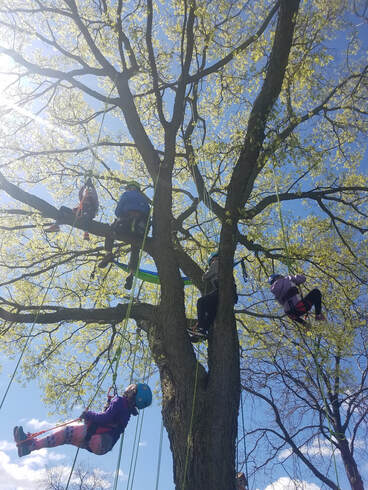 Technical Tree Climbing When we moved to St. Louis, we had a sugar maple that could be climbed, but it wasn’t nearly as much fun as my previous climbing tree. Aside from the maple, we had oaks, hickories, and elms that were too tall to climb since the lowest branches were about 20’ high. If you have the desire to climb into taller, larger, older trees, you are out of luck if they do not have low and small enough branches for climbing. Thankfully, ropes, saddles and specialized techniques allow us to climb into these magnificent trees. Climbing rope requires a unique set of motor skills and spatial awareness in addition to those skills we developed as free-climbers. It also requires the use of muscles you may not have known were there! Sitting back in your saddle and letting the tree and rope support your weight has an energizing effect. Once you climb into the crown of the tree and can play in the branches, you are continuously transferring your weight and sense of security between sitting in rope and being supported by a branch. The transition back and forth brings new challenges. This is part of what makes technical tree climbing a lot of fun and different from free-climbing. Once you begin to master the balance between using branches and using rope, you are better able to climb and explore the tree at will. You are able to enjoy the freedom of spending time in the branches without having to hold on. Another key difference is that, with rope, you can climb much higher. Some of the taller trees in Wisconsin allow us to ascend over 100 feet above the ground. The tallest trees in the world allow climbers to reach heights over 350 feet. While these heights sound impressive, the reality is that most people are challenged and impacted by reaching heights between 10 and 35 feet. The trees we climb around Wisconsin are perfect as they allow us to play in this realm. For those who like pushing the limits, I often include a few ropes that reach 40-50 feet during my climbs. In private excursions and guided climbs, we go even higher. In the end, the height each of us is most comfortable at will vary greatly. Using rope and saddle enables you to progressively challenge yourself to reaching new heights. Climb Trees
As a kid, I free-climbed trees because I didn’t know any other way. These days I climb using rope and saddle. Thanks to this hobby, I am able to explore amazing trees and chase views that few people will ever get to enjoy. I doubt my parents ever stopped to ponder the emotional and cognitive benefits I was receiving during my time in the trees. They knew it was important for kids to play outside because they could see the differences in my demeanor between those days and the ones I spent mostly inside in front of the tv and playing video games. Today, I notice differences in myself during and following my time in the trees. When I reflect back on my childhood, I am grateful my parents allowed me to climb trees. As long as you take into consideration that the tree you are climbing is a living being and do what you can to minimize your impact on the tree, I encourage you to get out and enjoy the trees. Take your children and loved ones with you. *Fine print: prior to entering a tree, I perform a thorough inspection to assess its health and structural integrity. There are a number of issues and conditions that can make a tree unfit for climbing. If you are unsure of the condition of your trees, please contact an ISA Certified Arborist and have them assess your tree (yes, even the small ones). If you are interested in climbing tall and mature trees, give me a call! I take a lot of pictures during our climbs. The experience is different for each climber, each person benefiting from it in their own way. Describing the different benefits that come from climbing trees can be difficult. But you can see it for yourself in this week’s video. Register for a climb today and come experience it for yourself! Warning: Playing outside can cause bruised arms, scraped knees, stubbed toes, dirty hands, stained clothing, muddy shoes. You will get wet when it rains, cold when temperatures are low, and hurt when you fall. Some people may require band-aids, ice packs, or loving arms to hold them as they cry. Life is one huge adventure for those who aren’t afraid of getting dirty. There are many places to explore, limitations to discover, and life lessons to learn. If we don’t learn them as children, then our road ahead will be hampered. Do you ever look back on your own childhood and feel grateful for the experiences you had and the lessons you learned when you were younger? You did not become the strong person you are today in spite of the challenges you faced, but rather because of them. I found it humorous, if not annoying, when my father would say, “when I was your age, I had to walk 5 miles to school.” My typical response was to roll my eyes, as that was what all old people said. These days I catch myself thinking and saying some of the same things! In reality, every generation thinks the next generation has it easier and aren’t as capable of dealing with hardships as they were. This has been going on for 2,000 years! (Check out this article: Proof That People Have Always Complained About Young Adults The more I consider the implications related this line of thinking, I think what we are really saying is that we are grateful for the challenges we had to face when we were younger and the leaders who provided encouragement and opportunities for me to do things for myself. This includes parents, teachers, and coaches. Facing Challenges I typically set up a number of ropes during a climbing event, each presenting different challenges for the climber. If your climbing rope is away from branches and hangs unimpeded from the top anchor point to the ground, your primary challenge will be dealing with your height above the ground and associated fears. By placing ropes so they hang near branches, you will face the challenge of maneuvering past the branch. The closer the rope is to the branch, the more difficult it is to climb around it. At one of our climbs this past summer, a young climber was climbing one of the more challenging rope routes of the day. The rope the young climber was on hung against a branch. With her weight on the rope, the rope rubbed snuggly against the branch above her head. Since her ultimate goal was to reach the top of the rope, well above this lower branch, she was going to have to get herself around it. Since the climbing knot slides up the rope that ran against the branch, she would need to pull the rope away from the branch in order to slide the knot around and above the branch. Until the knot was pulled away from the branch, there was a pinch point. In trying to get past the branch, she got her hand pinched between the rope and the branch. Ouch! She tried again. After a few attempts and just as many scratches on her fingers, she was beginning to get frustrated. After providing her with a few calming and encouraging words, she took a moment to analyze the challenge. Looking back up at the knot and impeding branch, she considered an alternative strategy that could potentially get her around the branch. Taking time to reassess the situation trying out an alternative technique was all she needed to figure out how she could overcome what seemed to be an insurmountable challenge. While her goal that day was to reach the top of that rope, the value of the climb happened along the way, and required a few scraped knuckles. She enjoyed her view of at the top, but she felt empowered and more self-confident because she was able to work past that lower branch. I am confident that the lesson she learned in the tree that day will stick with her as she faces challenges in school and work in her years ahead. Even more important, I hope she has the opportunity to encounter similar challenges often, for that is what will make her stronger and better prepared for what lays ahead. Learning On Our Own Often times adults are tempted to swoop in and offer up a solution as soon as we see a young person encountering an obstacle. With our life experience, I could picture the forthcoming pinch point for the young climber trying to get past the branch. In trying to help out, I could have interrupted her mental engagement and told her precisely how to avoid the obstacle. In doing so, I would have robbed her of the learning opportunity. However, we can only learn so much from listening or watching adults and leaders. We must do it on our own. Parents, teachers, and coaches are constantly balancing how much to help and how much to step back. Our role is to offer up and pass along knowledge to our children or students. It is up to them to take these tools and apply them to their own experiences. In order to teach a person how to climb up our ropes, our responsibility is to explain and demonstrate the knots and technique used to ascend. Then we need to step back and allow them to try on their own. They will make mistakes. They will move and process slower than us. This is the learning process which involves and extraordinary amount of activity going on inside the mind and body of the climber. The length of time required varies significantly between people and is greatly influenced by previous challenges they have faced and gained wisdom from. Should they make a mistake along the way, I have 2 basic options: correct them immediately or allow them to proceed. Ramifications of Rescuing If I jump in right away and correct them, then the lesson I am likely teaching them is that they can rely on me to help them through a struggle. They will eventually pick up the technique, but it usually takes much longer as they are not having to work through the steps on their own. Even if they want to figure it out by themselves, their mental process is derailed the moment I give them the answer. One issue with this approach is that I begin to anticipate when the climber is likely to face a struggle. Worse yet, I am then tempted to offer up the solution even before they are aware there is a challenge. Can you see how catastrophic this approach can be? We can deprive the climber of the opportunity to process and problem-solve because the solution is being provided to them before their mind even encounters the struggle. Freedom To Figure It Out
In contrast, if I allow them to proceed, they will soon figure out they missed a step. While it may look to bystanders that they are sitting there not knowing what to do, they are actually quite busy inside their head. They are processing through the information they gathered during my presentation and demonstration, then trying to figure out how to move their body in order to replicate the technique. They will figure it out. When they do, that is the moment they will have not only learned the process, but also became self-reliant, problem-solved, gained confidence, felt satisfaction, and built positive self-image. It is a challenge to determine the appropriate level of guidance to provide each climber. I strive to provide positive experiences as I do not like to see climbers become frustrated. The point of frustration triggers responses that are detrimental to a person’s learning process and obviously the enjoyment of the activity. Of course, there is a point at which we need to intervene in some manner. I just try to keep in mind that my ultimate goal is to help them learn how to do it on their own, not micromanage them to the top of the rope. It is fun to get to the top. It is rewarding if you do it on your own. Free play Bumps and bruises happen in all kinds of activities. They are part of the learning process. Not only should we not forget this, we should facilitate opportunities for girls and boys to face physical and mental challenges even if that exposes them to scrapes and scratches. With most anything we do, there are dangers involved that need to be addressed for safety. Once we’ve been able to set the parameters that help minimize the associated risks of severe injury, we should then encourage and allow children to have the opportunity to play freely. I am thankful for the knowledge my parents, teachers, and coaches provided me. I am even more grateful that they allowed me time for free play in order to practice, play, and work through the ways in which I could apply that knowledge. Bumps and bruises are often signs of growth and a lesson learned. Each scrape encountered plays an important role in developing creativity, self-confidence, problem-solving skills, and a positive self-image. Let’s not deprive kids these days of these important opportunities to grow! Screen-time. It seems like we cannot avoid it. Growing up, screen-time was the television. For me that meant MTV, Discovery Channel, sitcoms or playing Atari. Today, screen-time also comes from our phones, tablets, watches, pc’s, laptops. At work, at home, in the car, in restaurants and bars, or even while we sit on a park bench. While I it can be difficult to truly grasp the numerous impacts screen-time has on humans, I recently had an experience that opened my eyes to the conditioning affect I have subjected myself to. For some people, online interaction is the equivalent of the in-person social interactions I am drawn to. When I consider the time I spend online, a fair percentage of it is with social media platforms, news feeds and email inbox. I engage with each of these in a similar fashion, scrolling through a never-ending feed of digital stimulation. Within a fraction of a second, I make a decision for the next course of action. If the item requires a relatively short amount of time for contemplation or consideration, like a picture, I can appreciate it for a few seconds before my thumb intuitively flips on to the next item. If the item holds some value or interest requiring more in-depth engagement, I might give it a minute, but no more. In many cases, the item gets flagged, saved or added to my list for later action. I believe this overabundance of information and stimulation is part of what makes our digital devices so addictive. As soon as I pick up my phone it’s as if I enter a trance where I scroll continuously until one item grabs my attention enough for me to take pause. While I may think I am learning or absorbing the information I come across, I question how much I retain in this state of mind as I cannot process completely before I am on to the next stimuli. This became uncomfortably apparent to me recently. Back in the Analog World One of my weekly goals is to spend one morning dedicated to reading articles, journals and magazines I have collected in my “future reading” pile. This stack of readings and bookmarks include the items from my digital binges, articles I had flagged for later, and notes I take from books I am reading. I was at the coffeeshop one of these mornings with the sole purpose of taking time to read through a small stack of professional journals and research articles that I had set aside. I had already thumbed through the journals and knew there were specific articles that I wanted to give more attention to. I settled in to enjoy quiet time with my readings over a cup of coffee. I began paging through until I came upon the first article of interest. Being somewhat technical in nature, it captured my undivided attention. That article had a lot of great information, and there were plenty more to go. Before long I reached the end of my stack. Looking down at my stack of journals, I had to laugh. Somewhere along the way I stopped reading articles and ended up skimming through the pages and dog-earing the interesting articles for future reading. What was I doing? I was there to read! It’s as if I am on a constant search for new information and answers to my questions, yet not taking the time to digest and process the information beyond face value. When I thought it through, I realized that I had unknowingly returned to my habit of mindless scrolling. My digital reflex had jumped into my analog world. Digital Fast It may seem easy to explain it away with the notion we hear in regard to shortening attention spans, but I doubt it is that simple. Do kids-these-days have shorter attention spans? Has my attention span been shortened in the digital age? I never pursued the field of psychology beyond a handful of introductory courses in college so I may date myself; but, every time I heard a ding on my phone or laptop, I pictured myself as one of Pavlov’s dogs. With each interruption no matter how brief, it typically results in at least a 10 to 15-minute disruption in my day as it takes that long to fully reengage my mind with the task at hand. Talk about a drain on productivity. It didn’t take too long for me to shut off notifications on my devices! I believe that maintaining ready access to social media, news feeds, and e-mail are a powerful distraction and hindrance to engagement with work, play, family and friends. How well do you stay in conversation with your spouse when out to dinner at a restaurant with 15 screens or your phone on the table? This leaves me wondering if attention spans are truly decreasing to a significant level, or how much of this has to do with distraction and conditioning? Move Forward by Leaving It Behind
It takes me long enough to sort through my thoughts and write an article. As I sit here at my laptop I know one thing is for sure; I’d be here all day if I did not have my email closed and phone in my bag. Removing these distractions appears to have a positive effect on my attention span. Keeping my phone in my bag or otherwise out of reach also goes a long way to breaking my sub-conscious habit of picking it up for no apparent reason. Picking it up of course being the trigger to my fingers’ conditioned response of bringing it back to life, sending me tumbling uncontrolled down the rabbit hole. Moderating screen time improves my work product and returns tremendous benefits for me psychologically and emotionally. Digital fasting helps me regain perspective and control of where I focus my attention. One of the aspects I enjoy about taking people into the trees is that everyone engages in the moment. Phones are set down, eyes look up to the branches above and the excitement builds. Being a unique and adventurous experience, it captures participants’ attention the moment they walk up to the tree. Some parents and teachers have wished me luck with their child or student, alluding to their short attention span or the idea that all they like to do is play on their phone. They assume I will have a hard time keeping their interest for two hours without digital stimulation. In reality, there are some climbers who wish to take their phone with them into the tree so they can get some pictures. Most do not. It is common for those who do ask to forget to even pull out their phone while they are climbing! Engaging in the activities you enjoy is great for keeping your attention in focus. Climbing requires some attention on the task at hand. During a climb, everyone needs to take a break. This is when you are able to sit in the saddle, take in the view, catch your breath, and breathe in the moment. You are present in the moment, processing the experience and your emotions. I find peace and a calm mind in activities like tree-time. I find the same when I disconnect. |
AuthorAs a G.O.T.C. Recognized Master Instructor & Facilitator, I.S.A. Board Certified Master Arborist, and T.C.I.A. Certified Treecare Safety Professional, Curt has spent over 30 years dedicated to the study and care of trees. Categories
All
Archives
April 2024
|
|




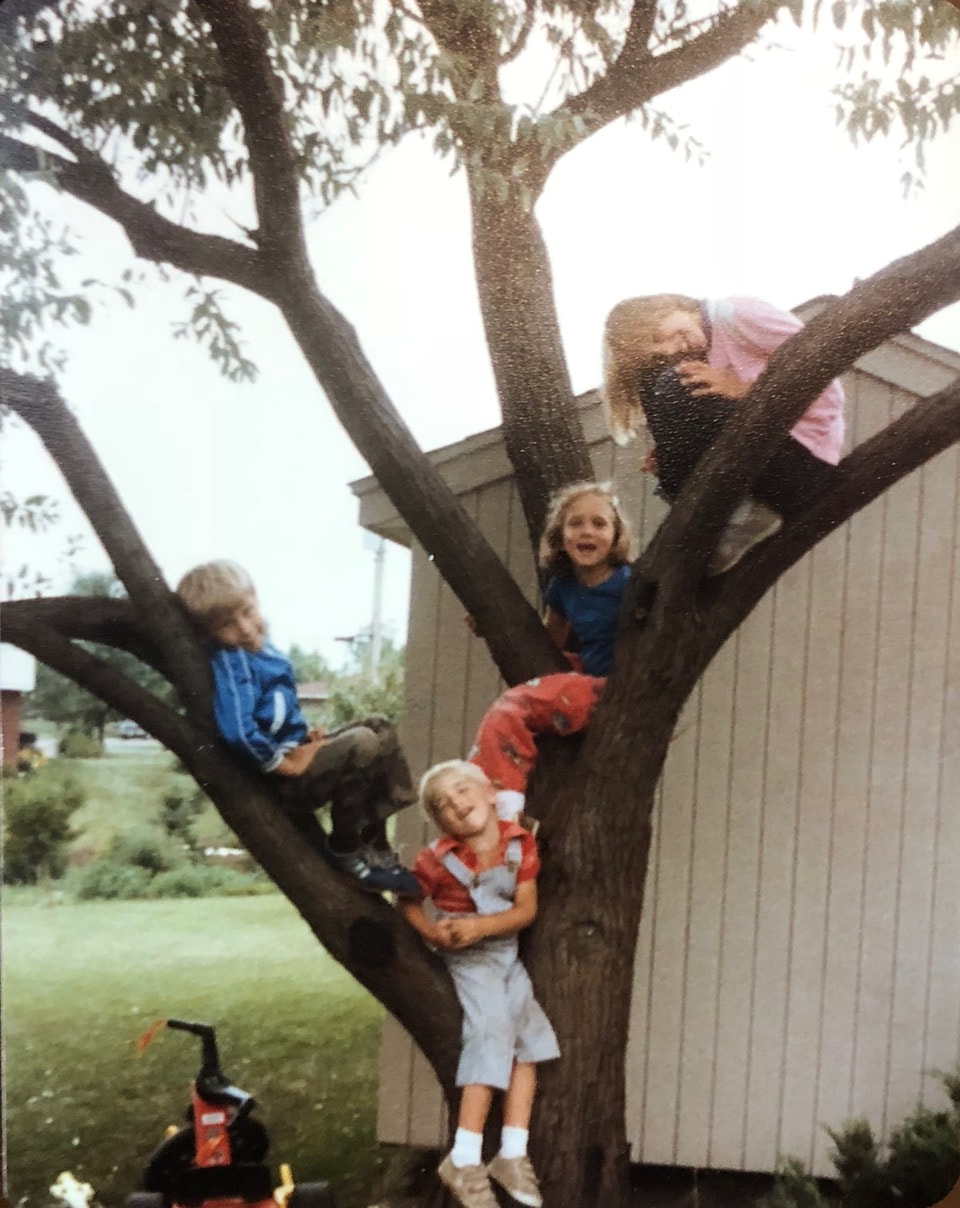

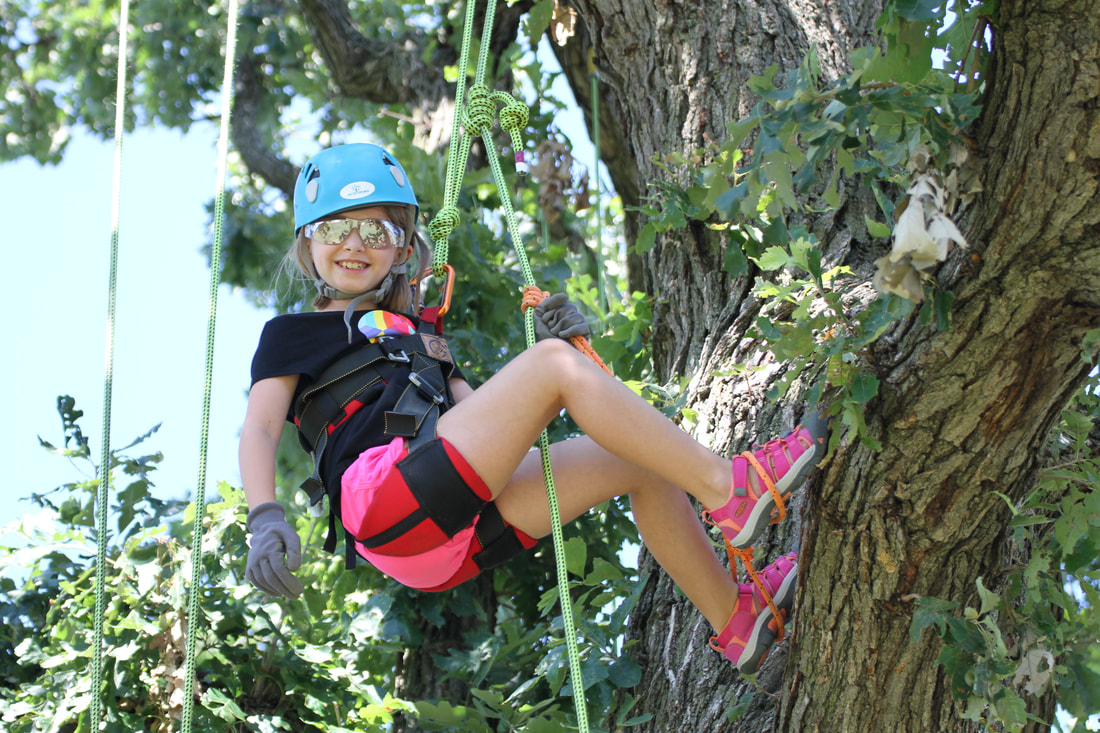

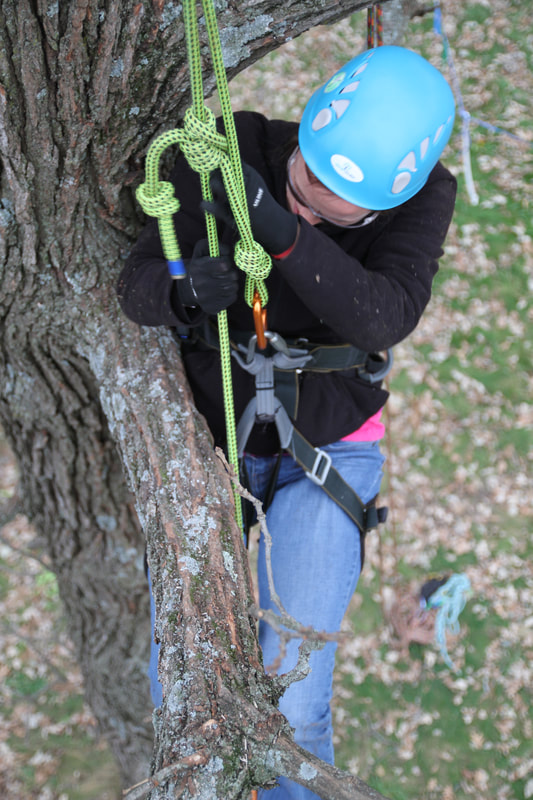
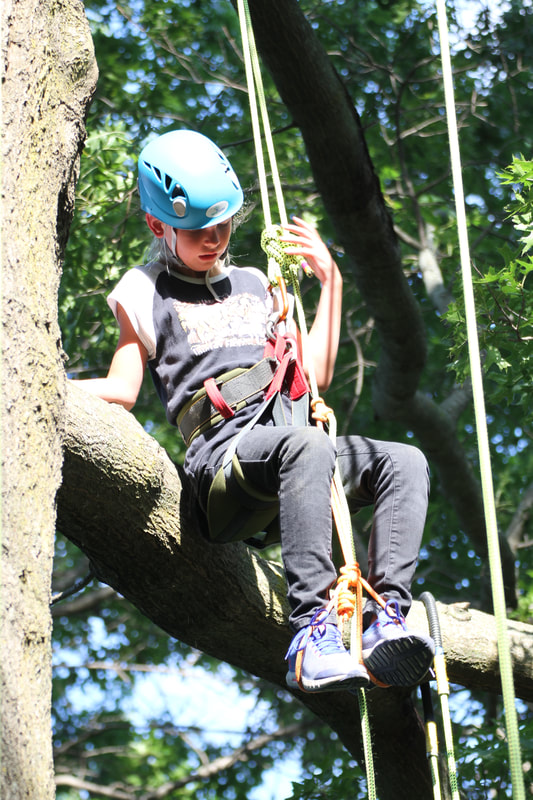
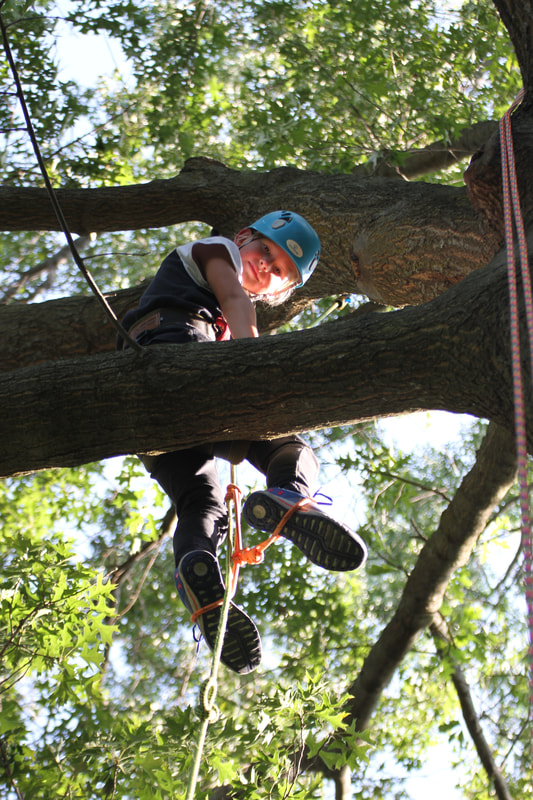

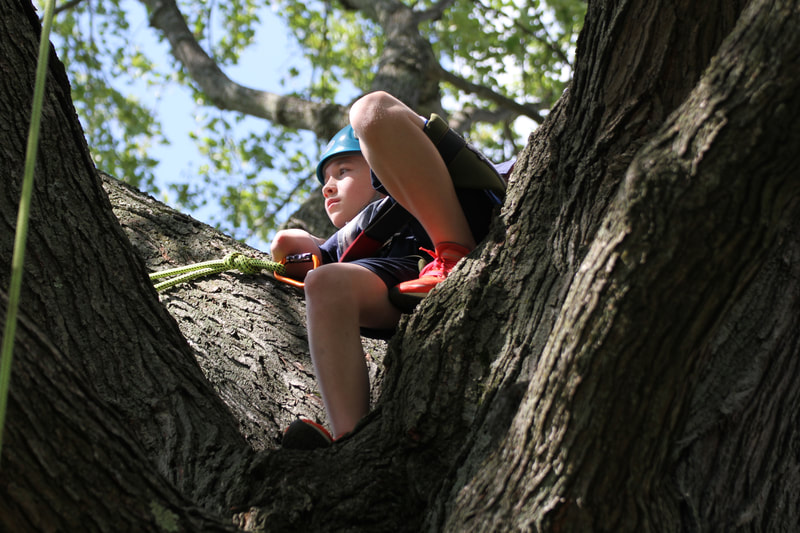
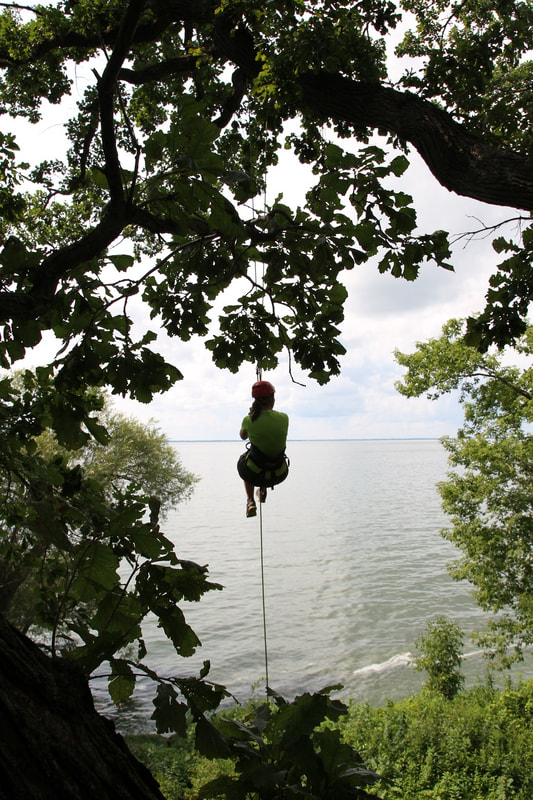

 RSS Feed
RSS Feed
